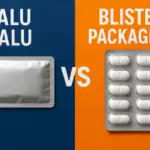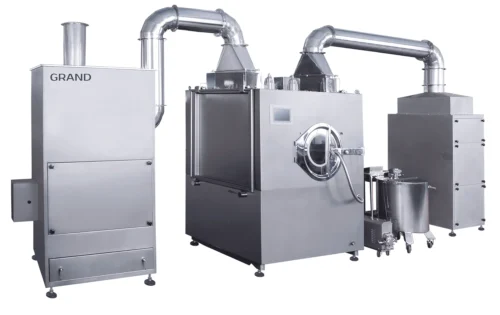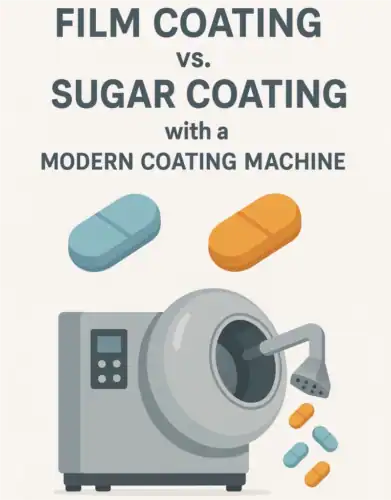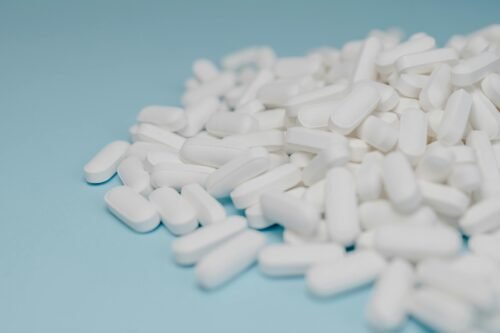
บรรจุภัณฑ์แบบ Alu Alu เทียบกับบรรจุภัณฑ์แบบพุพอง: การเลือกวัสดุกั้นที่ดีที่สุดสำหรับผลิตภัณฑ์ของคุณ

GrandPack จัดแสดงเครื่องจักรบรรจุภัณฑ์ยาขั้นสูงที่งาน CPHI & PMEC China 2025
แท็บเล็ตยุคใหม่: การเคลือบฟิล์มเทียบกับการเคลือบน้ำตาลด้วยเครื่องเคลือบในปัจจุบัน
การแนะนำ
วลี "เคลือบน้ำตาล" กลายเป็นคำอุปมาที่ใช้กันทั่วไปในการปกปิดความจริงที่ไม่น่าพึงใจนัก และเป็นเวลาหลายทศวรรษที่อุตสาหกรรมยาได้ทำเช่นนั้นจริงๆ การปฏิบัติดังกล่าว เคลือบเม็ดยา เกิดจากความต้องการที่จะทำให้ยาที่กลืนยากนั้นกลืนง่ายขึ้น แต่เทคโนโลยีได้พัฒนาไปไกลเกินกว่าแค่ชั้นน้ำตาลธรรมดาๆ ในปัจจุบัน วิทยาศาสตร์ของการเคลือบเม็ดยาถือเป็นศาสตร์ที่มีความแม่นยำสูง ซึ่งมีความสำคัญต่อความเสถียรของยา การทำงาน และเอกลักษณ์ของแบรนด์ วิวัฒนาการนี้ขึ้นอยู่กับอุปกรณ์หลักชิ้นหนึ่ง: อุปกรณ์ที่ทันสมัย เครื่องเคลือบผิวการเข้าใจความสามารถของเครื่องจักรนี้ถือเป็นกุญแจสำคัญในการทำความเข้าใจสองวิธีหลักในอุตสาหกรรม ได้แก่ การเคลือบน้ำตาลแบบดั้งเดิมและการเคลือบฟิล์มแบบสมัยใหม่

แม้ว่าเทคนิคทั้งสองอย่างจะมุ่งเป้าไปที่การปรับปรุงแท็บเล็ต แต่กระบวนการ ผลลัพธ์ และการใช้งานของทั้งสองอย่างมีความแตกต่างกันอย่างมาก ในฐานะผู้เชี่ยวชาญด้านอุปกรณ์เภสัชกรรมที่มีความแม่นยำ GrandPack พร้อมที่จะไขข้อข้องใจเกี่ยวกับกระบวนการเหล่านี้ คู่มือนี้จะสำรวจศิลปะคลาสสิกของการเคลือบน้ำตาล เจาะลึกเข้าไปในวิทยาศาสตร์ของ ฟิล์มเคลือบเม็ดยาและเปรียบเทียบกันแบบตัวต่อตัว เราจะเปิดเผยว่าทำไมวิธีการหนึ่งจึงกลายมาเป็นมาตรฐานของอุตสาหกรรม และวิธีการที่ล้ำสมัยที่สุด เครื่องเคลือบผิว ได้รับการออกแบบมาเพื่อมอบความสมบูรณ์แบบครั้งละหนึ่งเม็ด
ต้นฉบับคลาสสิก: ศิลปะแห่งการเคลือบน้ำตาล
การเคลือบเม็ดยาด้วยน้ำตาลเป็นวิธีการเคลือบเม็ดยาแบบดั้งเดิมที่สืบทอดกันมายาวนาน ลองนึกถึงลูกอมคลาสสิกอย่างอัลมอนด์จอร์แดนหรือ M&M ดูสิ ซึ่งกระบวนการนี้มีความคล้ายคลึงกันมาก โดยต้องสร้างชั้นวัสดุที่ทำจากน้ำตาลหนาๆ จำนวนมากรอบแกนเม็ดยาด้วยขั้นตอนที่พิถีพิถันหลายขั้นตอน เป้าหมายนั้นง่ายมาก นั่นคือ ปกปิดรสขม ป้องกันยาจากอากาศและความชื้น และทำให้เม็ดยามีพื้นผิวที่เรียบเนียนและน่ารับประทาน
กระบวนการเคลือบน้ำตาลแบบดั้งเดิมเป็นกระบวนการที่ประกอบด้วยหลายขั้นตอนในถาดเคลือบ:
- การปิดผนึก: ขั้นตอนแรกคือการทาเคลือบปิด (มักเป็นเชลแล็ก) บนแกนของเม็ดยา การเคลือบนี้จะช่วยกันน้ำให้กับแกนเม็ดยา และป้องกันไม่ให้ความชื้นจากน้ำเชื่อมน้ำตาลที่เติมลงไปซึมผ่านและทำให้ส่วนประกอบออกฤทธิ์ไม่เสถียร
- การเคลือบชั้นรอง: นี่คือขั้นตอนการเพิ่มปริมาตร เม็ดยาจะถูกเขย่าในกระทะในขณะที่ทาสารยึดเกาะและผงแป้งสลับกันเป็นชั้นๆ (เช่น แคลเซียมคาร์บอเนตหรือทัลค์) ขั้นตอนสำคัญนี้จะทำให้ขอบที่คมของแกนเม็ดยากลมขึ้นและขยายขนาดอย่างรวดเร็ว
- การไซรัป (หรือการเกลี่ย): ตอนนี้สีและพื้นผิวที่เรียบเนียนได้รับการพัฒนาแล้ว โดยจะทาไซรัปที่ทำจากซูโครสหลายชั้น ซึ่งมักมีสีผสมอยู่ด้วย โดยแต่ละครั้งจะต้องทำให้แห้งอย่างระมัดระวังเพื่อให้ได้พื้นผิวที่เรียบเนียนและสม่ำเสมอ ซึ่งเป็นขั้นตอนที่ต้องใช้ทักษะมากที่สุดของกระบวนการนี้
- การตกแต่ง: ชั้นน้ำเชื่อมขั้นสุดท้ายจะถูกนำไปใช้เพื่อเติมเต็มจุดบกพร่องที่เหลืออยู่ เพื่อให้แน่ใจว่าแท็บเล็ตมีลักษณะเรียบเนียนสมบูรณ์แบบและมีคุณภาพสูง
- การขัดเงา: ในที่สุด เม็ดยาจะถูกกลิ้งด้วยสารขัดเงา เช่น ขี้ผึ้งคาร์นัวบาหรือขี้ผึ้งในถาดที่สะอาด เพื่อให้เม็ดยามีความเงางามสูงตามลักษณะเฉพาะ
กระบวนการทั้งหมดนี้เป็นงานฝีมือซึ่งต้องอาศัยทักษะของผู้ปฏิบัติงานเป็นอย่างมาก เป็นขั้นตอนที่ยาวนานซึ่งอาจใช้เวลานานหลายชั่วโมงหรือหลายวันจึงจะเสร็จสมบูรณ์
มาตรฐานสมัยใหม่: วิทยาศาสตร์แห่งการเคลือบฟิล์ม
เมื่อวิทยาศาสตร์เภสัชกรรมก้าวหน้าขึ้น อุตสาหกรรมก็ต้องการวิธีการที่มีประสิทธิภาพ แม่นยำ และใช้งานได้จริงมากกว่าการเคลือบน้ำตาล ซึ่งนำไปสู่การพัฒนา การเคลือบฟิล์ม. ก. การเคลือบฟิล์มบนเม็ดยา เกี่ยวข้องกับการใช้สารละลายโพลีเมอร์ชั้นเดียวที่บางมากลงบนแกนของแท็บเล็ต
ต่างจากเปลือกหนาและหนักของน้ำตาล การเคลือบฟิล์ม เป็นเมมเบรนขนาดไมโครที่เข้ากับรูปร่างของแกนแท็บเล็ตเดิมได้อย่างสมบูรณ์แบบ รวมถึงโลโก้หรือเส้นขีดที่นูนขึ้นมา กระบวนการนี้เป็นเครื่องพิสูจน์ถึงความแม่นยำของวิศวกรรม

กลุ่มผลิตภัณฑ์เครื่องเคลือบของ GrandPack สามารถตอบสนองความต้องการการเคลือบแบบแบตช์ของโรงงานยาได้อย่างง่ายดาย
การ เม็ดยาเคลือบฟิล์ม จะถูกวางไว้ในถาดที่มีรูพรุนภายในเครื่องเคลือบสมัยใหม่ เมื่อถาดหมุน สารละลายโพลิเมอร์จะถูกทำให้เป็นละอองฝอยด้วยปืนพ่นที่มีความแม่นยำสูง กระแสลมร้อนที่ควบคุมได้จะถูกส่งผ่านฐานแท็บเล็ตพร้อมกัน ทำให้ตัวทำละลาย (ไม่ว่าจะเป็นน้ำหรือตัวทำละลายอินทรีย์) ระเหยเกือบจะในทันที ทิ้งฟิล์มบางๆ สม่ำเสมอ และแห้งไว้บนพื้นผิวของแท็บเล็ตแต่ละเม็ด
พอลิเมอร์ที่ใช้มีความหลากหลายสูงและสามารถเลือกได้จากหลากหลาย ฐานข้อมูลส่วนผสมที่ไม่ได้ใช้งาน เพื่อให้ได้ฟังก์ชันเฉพาะเจาะจง โพลิเมอร์ทั่วไปได้แก่:
- ไฮดรอกซีโพรพิลเมทิลเซลลูโลส (HPMC): พอลิเมอร์ชนิดละลายน้ำได้อเนกประสงค์และได้รับความนิยม
- เมทิลไฮดรอกซีเอทิลเซลลูโลส (MHEC): คล้ายกับ HPMC ให้ฟิล์มที่มีความแข็งแรงและยืดหยุ่น
- เอทิลเซลลูโลส (EC): ใช้สำหรับสร้างชั้นกั้นความชื้นหรือฟิล์มปิดบังรสชาติ
- พอลิเมอร์เอนเทอริก (เช่น Acryl-EZE®, Eudragit®): โพลิเมอร์ที่ไวต่อค่า pH เหล่านี้ใช้สำหรับการใช้งานที่ปลดปล่อยสารล่าช้า โดยคงสภาพอยู่ในกรดของกระเพาะอาหารแต่ละลายในสภาพแวดล้อมที่เป็นด่างของลำไส้
แนวทางทางวิทยาศาสตร์นี้ช่วยให้สามารถควบคุมและใช้งานได้ในระดับที่ไม่สามารถทำได้ด้วยการเคลือบน้ำตาล
การเปรียบเทียบระหว่างการเคลือบฟิล์มกับการเคลือบน้ำตาล
มาเปรียบเทียบทั้งสองวิธีนี้เกี่ยวกับปัจจัยที่มีความสำคัญที่สุดในการผลิตยา

1. เวลาและความซับซ้อนของกระบวนการ
- การเคลือบน้ำตาล: กระบวนการที่ซับซ้อนซึ่งกินเวลาหลายวัน ต้องใช้คนและทักษะของผู้ปฏิบัติงานอย่างมาก ขั้นตอนต่างๆ ของการปิดผนึก การเคลือบ การราดน้ำเชื่อม และการขัดเงา ล้วนใช้เวลานานอย่างไม่น่าเชื่อ
- การเคลือบฟิล์ม: กระบวนการแบบขั้นตอนเดียวที่มีระบบอัตโนมัติสูง การผลิตแบบแบตช์ทั่วไปสามารถเสร็จสิ้นได้ภายในเวลาเพียงไม่กี่ชั่วโมงโดยมีผู้ควบคุมดูแลน้อยที่สุด ทั้งหมดนี้ทำได้ภายในกระบวนการเดียวที่บรรจุ เครื่องเคลือบผิว.
ผู้ชนะ: การเคลือบฟิล์ม สำหรับการเพิ่มขึ้นอย่างเห็นได้ชัดทั้งในเรื่องความเร็วและประสิทธิภาพ
2. การเพิ่มน้ำหนักและขนาดของเม็ดยา
- การเคลือบน้ำตาล: สามารถเพิ่มน้ำหนักของเม็ดยาได้ 30-100% ซึ่งจะทำให้ขนาดเม็ดยาสุดท้ายเพิ่มขึ้นอย่างมาก ซึ่งอาจส่งผลให้กลืนยากขึ้นและเพิ่มต้นทุนการขนส่งและการจัดเก็บ
- การเคลือบฟิล์ม: เพิ่มน้ำหนักเพียงเล็กน้อย โดยทั่วไปจะมีน้ำหนักเพียง 2-5% เม็ดยาสุดท้ายจะมีขนาดเกือบเท่ากับแกนกลาง ทำให้ยังคงรักษาการประทับของตราสินค้าไว้ได้ และทำให้ผู้ป่วยรับประทานได้ง่ายขึ้น
ผู้ชนะ: การเคลือบฟิล์ม เนื่องจากมีผลกระทบต่อขนาดและน้ำหนักของแท็บเล็ตน้อยที่สุด
3. ฟังก์ชันการใช้งานและความอเนกประสงค์
- การเคลือบน้ำตาล: หน้าที่หลักของยานี้คือช่วยปิดบังรสชาติและปรับปรุงรูปลักษณ์ของยา เนื่องจากมีความสามารถในการปลดปล่อยยาได้จำกัดมาก
- การเคลือบฟิล์ม: ที่นี่คือที่ ฟิล์มเคลือบ เปล่งประกายอย่างแท้จริง ด้วยการเลือกใช้โพลีเมอร์ที่แตกต่างกัน ผู้ผลิตสามารถสร้าง:
- สารเคลือบปลดปล่อยทันที: มาตรฐานสำหรับยาเม็ดส่วนใหญ่
- สารเคลือบเอนเทอริก: เพื่อป้องกันยาจากกรดในกระเพาะอาหารหรือกระเพาะอาหารจากยา
- สารเคลือบแบบปลดปล่อยอย่างต่อเนื่อง: เพื่อควบคุมอัตราการปล่อยยาในช่วงเวลาหลายชั่วโมง
- สารเคลือบป้องกันความชื้น: เพื่อปกป้องส่วนผสมออกฤทธิ์ที่มีความอ่อนไหวสูง
ผู้ชนะ: การเคลือบฟิล์มซึ่งให้ความหลากหลายในการใช้งานที่ไม่มีใครเทียบได้
4. รูปลักษณ์ การสร้างตราสินค้า และการระบุตัวตน
- การเคลือบน้ำตาล: ผลิตแท็บเล็ตที่มีรูปทรงโค้งมนสวยงาม อย่างไรก็ตาม แท็บเล็ตดังกล่าวจะบดบังรายละเอียดทั้งหมดของแท็บเล็ตหลักได้หมด
- การเคลือบฟิล์ม: สร้างพื้นผิวที่เรียบลื่นและทันสมัยซึ่งเลียนแบบรูปร่างของแกนแท็บเล็ตได้อย่างสมบูรณ์แบบ ซึ่งเป็นสิ่งสำคัญสำหรับการสร้างแบรนด์ เนื่องจากโลโก้ที่ซับซ้อนหรือรหัสประจำตัวที่สลักไว้บนแท็บเล็ตยังคงคมชัดและมองเห็นได้ชัดเจน
ผู้ชนะ: การเคลือบฟิล์ม เพราะความสามารถในการสร้างแบรนด์และระบุตัวตนอันเหนือชั้น
เครื่องยนต์แห่งความแม่นยำ: เครื่องเคลือบแท็บเล็ตที่ทันสมัย
การเปลี่ยนจากการเคลือบน้ำตาลไปเป็นการเคลือบฟิล์มแบบโดดเด่นเป็นไปได้เนื่องมาจากความก้าวหน้าในการออกแบบอุปกรณ์ ความทันสมัย เครื่องเคลือบผิว เป็นผลงานชิ้นเอกทางวิศวกรรมที่ออกแบบมาเพื่อควบคุมกระบวนการอย่างสมบูรณ์แบบ

คุณสมบัติที่สำคัญ ได้แก่:
- ถาดเคลือบแบบเจาะรู: ต่างจากกระทะทึบที่ใช้ในอดีต กระทะสมัยใหม่มีรูพรุน ทำให้ลมเป่าแห้งที่ควบคุมได้ไหลผ่านฐานของเม็ดยา ทำให้การอบแห้งมีประสิทธิภาพสูงและสม่ำเสมอ
- ระบบฉีดพ่นความแม่นยำสูง: เครื่องนี้มีปืนฉีดพ่นหลายกระบอกซึ่งสามารถปรับอัตราการฉีดพ่น แรงดันละออง และรูปแบบการฉีดพ่นได้อย่างแม่นยำ ซึ่งช่วยให้มั่นใจได้ว่าสารละลายโพลิเมอร์จะถูกฉีดพ่นเป็นละอองละเอียดสม่ำเสมอ
- ระบบจัดการอากาศขั้นสูง (AHU): หน่วยนี้ช่วยให้ผู้ปฏิบัติงานควบคุมอุณหภูมิ ความชื้น และปริมาณอากาศในกระบวนการได้อย่างแม่นยำ ซึ่งถือเป็นสิ่งสำคัญสำหรับการได้ฟิล์มที่สมบูรณ์แบบและปราศจากข้อบกพร่อง
- ระบบควบคุมอัตโนมัติ (PLC): พารามิเตอร์กระบวนการทั้งหมดได้รับการตรวจสอบและควบคุมผ่าน Programmable Logic Controller ซึ่งช่วยให้สามารถสร้างสูตรที่ผ่านการตรวจสอบและทำซ้ำได้ ทำให้มั่นใจได้ถึงความสม่ำเสมอของชุดต่อชุด กระบวนการเคลือบลูกกลิ้งในบริบทนี้ หมายถึงการกลิ้งหรือหมุนเม็ดยาภายในถาด ซึ่งถือเป็นสิ่งสำคัญเพื่อให้แน่ใจว่าทุกพื้นผิวจะสัมผัสกับสเปรย์
ระดับของระบบอัตโนมัติและการควบคุมนี้คือสิ่งที่ทำให้คุณภาพและการทำงานที่เหนือกว่า เม็ดยาเคลือบฟิล์ม เป็นไปได้ในระดับอุตสาหกรรม
บทสรุป: ผู้ชนะที่ชัดเจนสำหรับโลกสมัยใหม่
แม้ว่ายาเม็ดเคลือบน้ำตาลแบบคลาสสิกจะให้ความรู้สึกคิดถึงอยู่บ้าง แต่ผลลัพธ์ก็ชัดเจน สำหรับการผลิตยาสมัยใหม่ การเคลือบฟิล์ม เป็นวิธีที่เหนือชั้นกว่ามาก เร็วกว่า มีประสิทธิภาพมากกว่า คุ้มต้นทุนกว่า และมีความยืดหยุ่นในการใช้งานในระดับที่จำเป็นสำหรับสูตรยาขั้นสูงในปัจจุบัน
การเดินทางจากความเรียบง่าย การเคลือบเม็ดยา เมมเบรนที่ใช้งานได้จริงและได้รับการออกแบบทางวิศวกรรมเป็นเรื่องราวของความก้าวหน้าทางวิทยาศาสตร์ และความแม่นยำคือจุดศูนย์กลางของทั้งหมดนี้ เครื่องเคลือบผิวโดยการเข้าใจความสามารถของอุปกรณ์เหล่านี้ ผู้ผลิตสามารถมั่นใจได้ว่าผลิตภัณฑ์ของตนไม่เพียงแต่ได้รับการปกป้องเท่านั้น แต่ยังได้รับการปรับให้เหมาะสมในด้านประสิทธิภาพ ความปลอดภัย และความสำเร็จในตลาดโลกอีกด้วย
คำถามที่พบบ่อย (FAQs) เกี่ยวกับเครื่องเคลือบ
1. พารามิเตอร์หลักที่ต้องควบคุมในเครื่องเคลือบแท็บเล็ตเพื่อให้ได้การเคลือบฟิล์มที่สมบูรณ์แบบคืออะไร พารามิเตอร์ที่สำคัญที่สุดสี่ประการเป็นส่วนหนึ่งของสมดุลที่ละเอียดอ่อน:
- อุณหภูมิอากาศเข้า: ควบคุมประสิทธิภาพการอบแห้ง
- อัตราการพ่น: ความเร็วในการนำสารเคลือบไปใช้
- ความเร็วแพน: ความเร็วการหมุนของถาดทำให้มั่นใจได้ว่าเม็ดยาทั้งหมดจะถูกฉีด
- ความดันอากาศการละออง: ควบคุมขนาดของละอองสเปรย์ ละอองที่ละเอียดกว่าจะแห้งเร็วขึ้นและสร้างฟิล์มที่เรียบเนียนขึ้น การควบคุมปฏิสัมพันธ์ระหว่างตัวแปรเหล่านี้ถือเป็นกุญแจสำคัญในการป้องกันข้อบกพร่อง เช่น การแตกร้าว การลอก หรือพื้นผิว "เปลือกส้ม"
2. เครื่องเคลือบตัวเดียวกันสามารถใช้เคลือบฟิล์มและเคลือบน้ำตาลได้หรือไม่? ใช่ เครื่องจักรสมัยใหม่จำนวนมากมีความคล่องตัวเพียงพอที่จะจัดการกับทั้งสองอย่าง แต่ต้องมีการตั้งค่าที่แตกต่างกัน สำหรับการเคลือบน้ำตาล ปืนฉีดแรงดันสูงอาจถูกแทนที่ด้วยท่อส่งสารละลายที่ง่ายกว่า และพารามิเตอร์กระบวนการในระบบควบคุมจะแตกต่างกันอย่างมาก อย่างไรก็ตาม เนื่องจากการเคลือบน้ำตาลเป็นกระบวนการที่ช้ากว่าและมีประสิทธิภาพน้อยกว่ามาก บริษัทส่วนใหญ่ที่ใช้เครื่องมือสมัยใหม่จึงอุทิศเครื่องจักรของตนให้กับกระบวนการเคลือบฟิล์มที่มีประสิทธิผลมากกว่ามาก
3. ระบบ “Clean-In-Place” (CIP) คืออะไร และเหตุใดจึงสำคัญต่อเครื่องเคลือบ ระบบ Clean-In-Place (CIP) คือคุณลักษณะการทำความสะอาดอัตโนมัติที่มีความสำคัญต่อการผลิตยา โดยประกอบด้วยหัวฉีดที่จัดวางไว้ในตำแหน่งที่เหมาะสมภายในเครื่องซึ่งจะพ่นสารทำความสะอาดและน้ำเพื่อทำความสะอาดภายในถาดเคลือบ ปืนฉีดพ่น และท่อไอเสียทั้งหมดโดยไม่จำเป็นต้องถอดประกอบเครื่อง วิธีนี้ช่วยให้ทำความสะอาดได้อย่างรวดเร็ว มีประสิทธิภาพ และทำซ้ำได้ระหว่างการผลิต ซึ่งถือเป็นสิ่งสำคัญในการป้องกันการปนเปื้อนข้าม และเป็นไปตามมาตรฐาน cGMP (แนวทางปฏิบัติที่ดีในการผลิตในปัจจุบัน)







